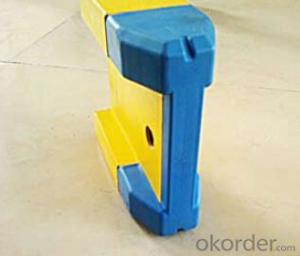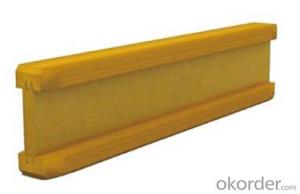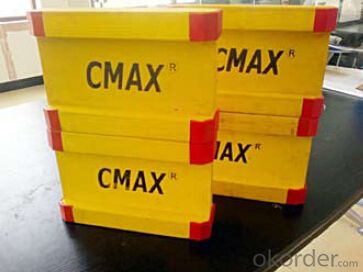Timber Beam for Formwork and Scaffolding system
- Loading Port:
- Tianjin
- Payment Terms:
- TT OR LC
- Min Order Qty:
- 50 m²
- Supply Capability:
- 1000 m²/month
OKorder Service Pledge
OKorder Financial Service
You Might Also Like
Characteristics:
◆ Standardized production lines.
Supply capability: 3000m/day, Lmax = 6600mm.
◆ Finger jointing of the flange and web, the strength of timber beam is highly improved.
Max. shearing force failure load:40KN
◆ Well treated to prevent from water penetration or erosion, so the service life maximally extended.
Normally, CNBM timber beam H20 can be used for 4 to 5 years, the exact using time would depend on maintenance & storage.
◆ Robust caps at the end of the girders protect against damages.
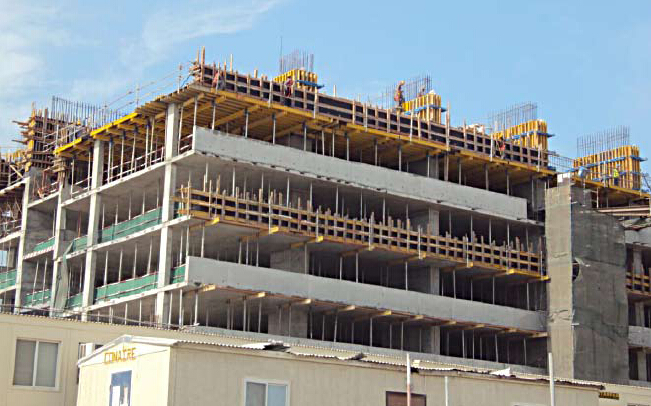
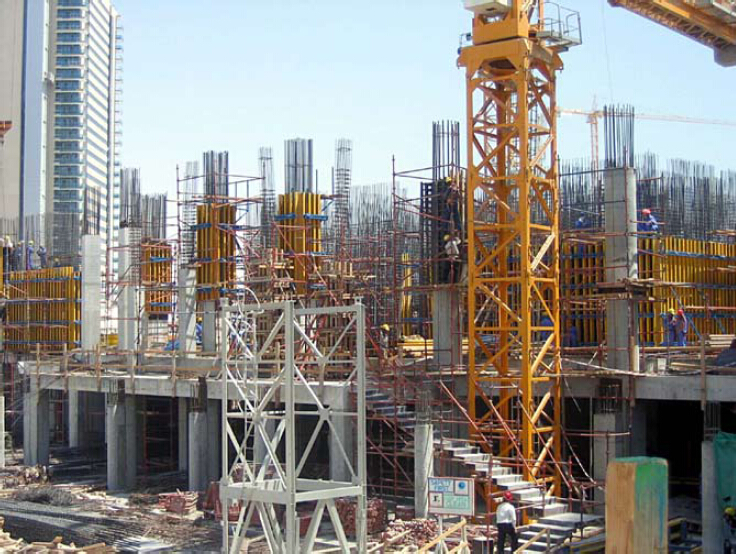
- Q: Is steel formwork reusable?
- Steel formwork can be reused due to its durability and strength. It is a temporary mold or structure used to hold wet concrete in place until it sets and hardens. Unlike timber or plywood formwork, steel formwork is highly durable and known for its strength. The steel panels and frames are designed to withstand the pressure exerted by the wet concrete, ensuring the formwork remains intact during the pouring and setting process. The robustness of steel formwork makes it a cost-effective option for construction projects. It can be dismantled and cleaned after the concrete has set, ready to be used again on future projects. This not only reduces waste but also saves money on material costs, eliminating the need to continually purchase new formwork for each project. However, proper maintenance and handling are essential for the reusability of steel formwork. Regular inspection and maintenance are necessary to keep the formwork in good condition and free from any defects or damage. Additionally, careful handling during dismantling and transportation is crucial to prevent bending or distortion of the steel components. In conclusion, steel formwork is a sustainable and cost-effective choice for construction projects because of its reusability. Its durability and strength allow it to withstand multiple uses, reducing waste and saving money in the long run.
- Q: How are steel formwork panels connected together?
- Steel formwork panels are usually connected together using a combination of different methods such as interlocking pins, bolts, or clamps. These connections ensure that the panels remain securely in place, forming a strong and stable structure for concrete pouring.
- Q: Can steel formwork be used in sports facility construction projects?
- Sports facility construction projects can utilize steel formwork, a versatile and durable option that presents several advantages. First and foremost, it boasts exceptional strength and stability, rendering it suitable for large-scale structures such as sports facilities. Steel formwork is capable of withstanding heavy loads and pressures, thereby guaranteeing the construction's integrity and safety. Furthermore, steel formwork is highly reusable, leading to significant reductions in construction costs and waste. It can be effortlessly disassembled, cleaned, and reassembled for future projects, making it an environmentally friendly choice for sports facility construction. Additionally, steel formwork permits precise and accurate construction. Its rigidity and dimensional stability guarantee the attainment of the desired shape and dimensions for the sports facility. This is especially crucial in sports facilities where precise measurements and uniformity are paramount for proper functionality. Moreover, steel formwork provides a smooth and uniform surface finish. This attribute is indispensable in sports facilities where the playing surface must be even and consistent to ensure fair gameplay and prevent injuries. To summarize, steel formwork is a suitable option for sports facility construction projects due to its strength, reusability, precision, and smooth surface finish. It offers numerous benefits and can contribute to the successful completion of sports facilities.
- Q: How does steel formwork affect the overall energy efficiency of a structure?
- Steel formwork can have a significant impact on the overall energy efficiency of a structure. Firstly, steel formwork is known for its durability and strength, which allows it to be reused multiple times. This reusability reduces the need for new formwork materials, thereby minimizing waste generation and conserving resources. By reducing the amount of waste produced during construction, the overall environmental impact is reduced, leading to improved energy efficiency. Additionally, steel formwork offers excellent thermal properties. It has a high thermal mass, meaning it can absorb and store heat energy effectively. This characteristic helps regulate the temperature inside the structure, reducing the reliance on heating or cooling systems. By stabilizing the internal temperature, the energy consumption for climate control is reduced, resulting in improved energy efficiency and lower operational costs. Furthermore, steel formwork enables the construction of energy-efficient designs. Its versatility allows for complex shapes and configurations, facilitating the integration of energy-saving elements such as insulation, ventilation systems, and renewable energy technologies. These features contribute to the overall energy performance of the structure, enhancing its efficiency and sustainability. Overall, steel formwork positively impacts the energy efficiency of a structure by reducing waste, providing excellent thermal properties, and enabling energy-efficient designs. By utilizing steel formwork, construction projects can achieve higher levels of sustainability and contribute to a greener and more energy-efficient built environment.
- Q: What is the maintenance required for steel formwork?
- To maintain steel formwork, cleaning and storage are of utmost importance. After each use, it is crucial to thoroughly clean the formwork to eliminate any concrete residue or debris. This can be accomplished by employing water and a brush or pressure washer. Additionally, any signs of rust should be addressed with a rust converter and a coat of paint to prevent further deterioration. Proper storage plays a vital role in maintaining steel formwork. It should be kept in a dry and well-ventilated area to prevent the accumulation of moisture and subsequent rusting. If feasible, storing the formwork above ground level will minimize contact with moisture. To ensure the formwork remains in optimal working condition, regular inspections should be conducted to detect any damages or signs of wear and tear. Any bent or damaged components should be promptly repaired or replaced. In summary, maintaining steel formwork entails regular cleaning, appropriate storage, and thorough inspections to guarantee its longevity and effectiveness in construction projects.
- Q: Can steel formwork be used for bridge construction?
- Yes, steel formwork can be used for bridge construction. Steel formwork offers several advantages such as high strength, durability, and reusability, making it suitable for constructing bridge components like beams, columns, and decks. It provides a stable and rigid structure that can withstand heavy loads and adverse weather conditions, ensuring the safety and longevity of the bridge.
- Q: What are the considerations when designing steel formwork for culverts?
- When designing steel formwork for culverts, several considerations need to be taken into account. Firstly, the formwork must be strong and durable enough to withstand the pressures exerted by the concrete during the pouring and curing process. It should be able to support the weight of the concrete without warping or collapsing. Additionally, the formwork should be designed to allow for proper drainage and prevent the occurrence of any water accumulation or pockets within the culvert. Adequate provision for weep holes and outlets should be made to ensure smooth water flow. The geometry and dimensions of the culvert must be carefully considered when designing the formwork. It should be designed to accurately shape the culvert, ensuring that it conforms to the desired size and shape specifications. This may involve the use of adjustable panels or modular systems to accommodate different culvert sizes and configurations. Another important consideration is ease of assembly and disassembly. The formwork should be designed in a way that allows for quick and efficient installation and removal. This can help save time and labor costs during construction. Lastly, safety is a crucial consideration when designing steel formwork for culverts. Adequate precautions should be taken to ensure the stability of the formwork during construction, preventing any accidents or injuries. This may involve incorporating proper bracing, anchoring, and support systems to maintain the integrity of the formwork structure. Overall, the considerations when designing steel formwork for culverts include strength, drainage, geometry, ease of assembly, and safety. By addressing these factors, a well-designed formwork system can facilitate the construction of durable and functional culverts.
- Q: Can steel formwork be used for both residential and institutional projects?
- Steel formwork is a construction material that can be used for both residential and institutional projects. It is known for its versatility and durability, which makes it suitable for a wide range of construction projects, including buildings for both residential and institutional purposes. The construction industry commonly uses steel formwork due to its strength, stability, and ability to be reused. By providing a strong and sturdy framework for pouring concrete, steel formwork helps in creating precise and well-structured structures. Its ability to withstand high pressures and loads makes it ideal for large-scale institutional projects like schools, hospitals, and government buildings. Similarly, steel formwork can also be applied in residential projects such as single-family homes, apartment complexes, and townhouses. Its versatility enables flexible and efficient construction methods, making it a popular choice for different types of projects.
- Q: What are the different types of formwork corners used in steel formwork systems?
- There are typically three types of formwork corners used in steel formwork systems: external corners, internal corners, and chamfer corners. External corners are used to create sharp outside corners in the concrete structure. Internal corners are used to create sharp inside corners in the concrete structure. Chamfer corners are used to create beveled edges or rounded corners in the concrete structure. These different types of corners allow for flexibility in the design of the concrete structure and ensure a smooth and precise finish.
- Q: Can steel formwork be used for heritage restoration projects?
- Yes, steel formwork can be used for heritage restoration projects. Steel formwork offers several advantages that make it suitable for such projects. Firstly, steel formwork is highly durable and can withstand the rigors of restoration work. It can be reused multiple times, making it a cost-effective option in the long run. Additionally, steel formwork provides excellent stability and structural integrity, ensuring that the restored heritage structure is sturdy and safe. Moreover, steel formwork allows for precise shaping and detailing, which is crucial in restoring heritage buildings to their original design and aesthetics. Lastly, steel formwork can be easily customized to match the unique requirements of each restoration project. Overall, steel formwork is a reliable and efficient choice for heritage restoration projects.
Send your message to us
Timber Beam for Formwork and Scaffolding system
- Loading Port:
- Tianjin
- Payment Terms:
- TT OR LC
- Min Order Qty:
- 50 m²
- Supply Capability:
- 1000 m²/month
OKorder Service Pledge
OKorder Financial Service
Similar products
Hot products
Hot Searches
Related keywords
